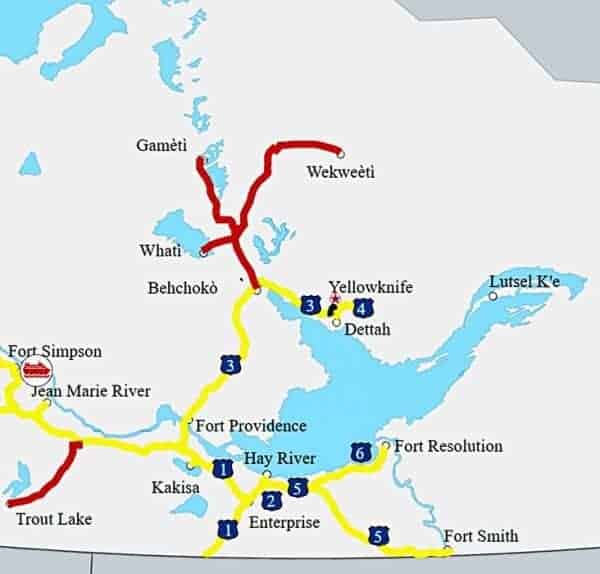The GNWT and Tlicho Government seem to be in general agreement about what they want to tweak in the conditions of the Mackenzie Valley Environmental Impact Review Board’s approval of the proposed 97-kilometre all-season road linking Highway 3 to Whati.
On June 22, both governments submitted changes they’d like to see made to various conditions attached the MVEIRB’s review of the project, released at the end of March.

“As a decision maker and as this is still an ongoing regulatory decision-making process, Tlicho Government will not be holding interviews,” wrote Tlicho executive officer Laura Duncan in response to a request for comment.
Cabinet communications for the GNWT stated the same thing about the ministers involved.
“This process is ongoing and a final decision (on the MVEIRB review) from the Tlicho Government is expected in mid-August,” wrote Duncan.
Despite keeping mum, the two parties’ positions are relatively clear from documents filed with the review board.
The GNWT’s main concerns are around three recommendations that aim to mitigate impacts on nearby Boreal caribou. While the GNWT isn’t asking for the recommendations to be removed, it is asking that several tweaks be made.
In one change, the GNWT is asking to change wording around the timeline for developing a range plan for the caribou. In addition to clarifying that the plan would be for the North Slave portion of the Nt1 Boreal caribou range and not for the entire North Slave region, the GNWT says it can’t guarantee the completion of such a range plan before the road being opened to the public, as it is not the only authority involved in such a plan.
Instead, it’s asking that the requirement be for the GNWT to develop a plan and submit it to Wek’eezhi Renewable Resources Board for review at least 90 days before the road opens.
As well, the GNWT wants to dash the requirement for creating a temporary no-hunting corridor around the road for Boreal caribou before the road is open. The GNWT proposes instead to work with Indigenous governments, particularly the Tlicho, to monitor harvest levels and take action if needed.
The third main change involves eliminating the requirement for a 2,500-metre buffer on each side of the road as part of a caribou habitat offset plan and replacing that with a requirement to work together with the Tlicho Government and Wek’eezhii Renewable Resource Board – in consultation with Environment and Climate Change Canada, the Yellowknives Dene First Nation and the North Slave Metis Alliance – to determine the habitat offset area.
Much of the other tweaks align the recommendations with the authorities and co-management agreements of the area, set out in the Tlicho Agreement and other agreements.
Much of the Tlicho Government’s own proposals centre around making sure the responsibilities for the recommendations are shared fairly between the overlapping authorities of several bodies, including the Tlicho and the GNWT.
Several times in its proposals, the Tlicho Government references the GNWT’s proposals as satisfactory remedies to problems that its team has identified in the original MVEIRB conditions.
On June 21, Environment and Climate Change Canada submitted a letter to the MVEIRB that it does not take issue with the GNWT’s proposed changes.
The final approval and go-ahead of the plan will be given by the territorial ministers of Lands as well as Environment and Natural Resources; and the federal ministers of Natural Resources Canada as well as Crown-Indigenous Relations and Northern Affairs.